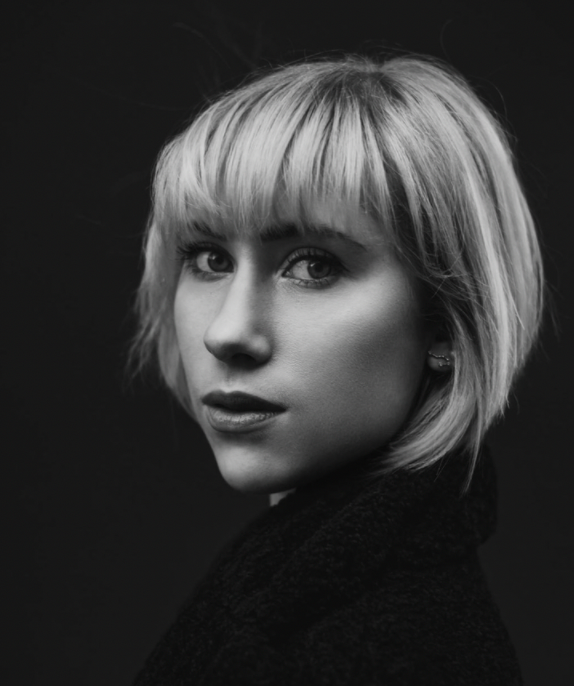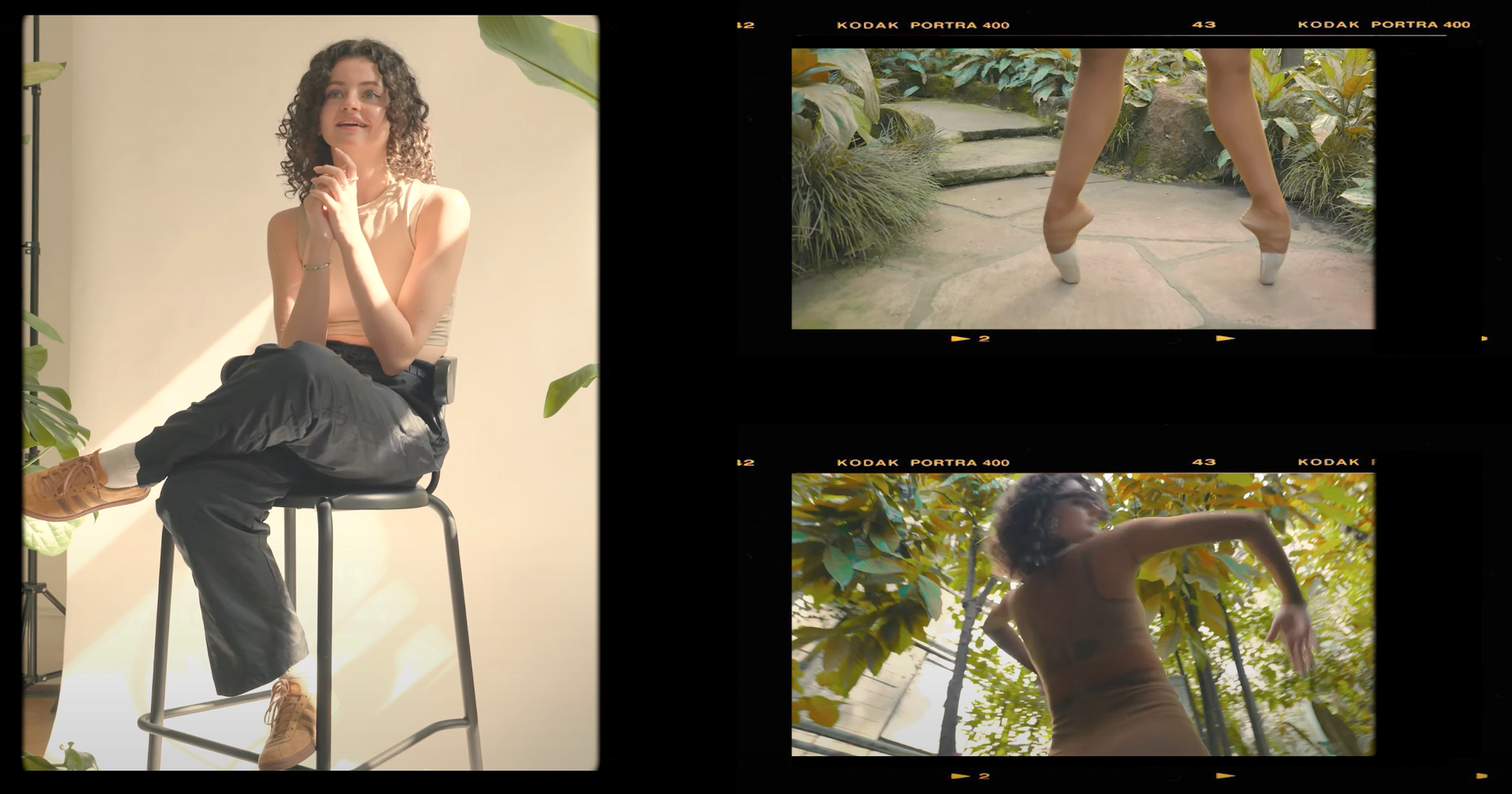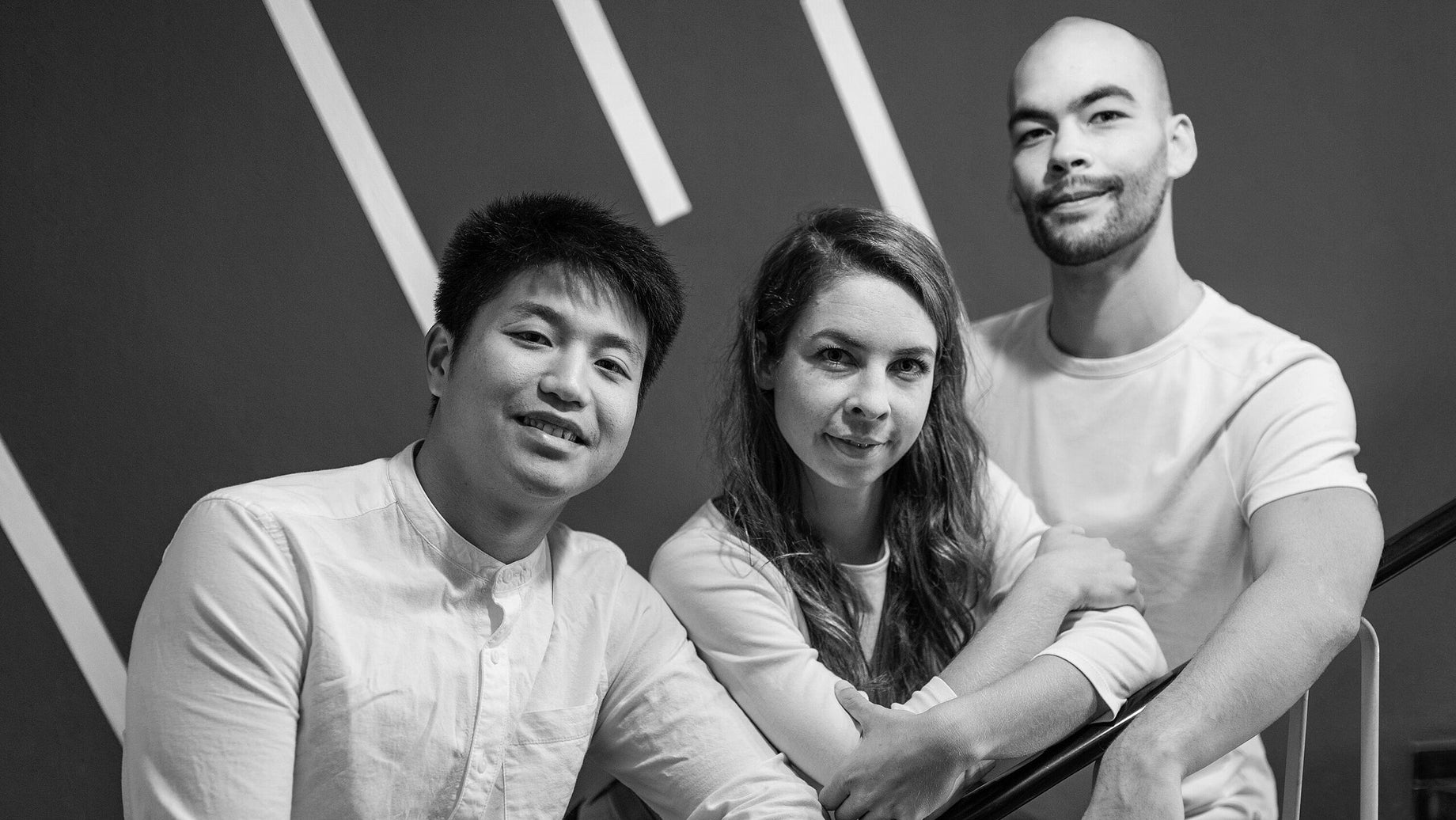Suzan Sittig : The Right Fit
Finding the right pair of pointe shoes is synonymous with finding the right partner. The right support helps you in times of need and allows you to thrive and become a better person. The same is with the perfect pair of pointe shoes; they help you feel secure and make your dancing come alive. While we know this, why is finding the right pair still so problematic?
With retired shoemakers, delayed deliveries, and a messed-up supply chain, finding the right fit for dancers in 2022 continues to be even more complex and challenging than ever before.
In this series of Finding The Right Fit, we follow the pointe shoe journey of three professional dancers: Suzan Sittig, Cécile Kaltenbach, and Sarah Irmatova. From their first fittings to their transition from student to company life, we explore the many facets and demands of a dancer, and ultimately, what one looks for in finding the right fit—and the consequences for not wearing the right ones.

No. of pointe shoe brands worn: 6
No. of pointe shoe models worn: 13
My first pointe shoe fitting
I had a ballet teacher who had strict ideas about when a young dancer should be ready and strong enough for her first pair of pointe shoes. To me, it was like a challenge accepted. As I learned the importance of metatarsal strength, I started fanatically doing daily exercises to speed up the process of getting onto pointe: hundreds of tedious metatarsal lifts, daily towel scrunches, pens, and picking up pencils with my toes, and many many calf rises.
It felt like Christmas came early the day I was allowed to have my first pointe shoe fitting; I remember feeling lost up in cloud 9. I was fitted with BLOCH Sonata and got the whole starter kit: ouch-pouches, darning thread and needles, and ribbons. It was the start of my journey in navigating the labyrinth of pointe shoes.
What was it like training in my first pair of pointe shoes?
I was 11 and very ambitious when I started pointe work. My teacher had to rein me in and forbade me to try any more than she had instructed, which were endless versions of rises and réléves at the barre (with both hands). They were true ‘medicine’ exercises. In my little world, I was ready to tackle fouettes en pointe!
What was I looking for in a shoe when I was at school?
As an absolute beginner, the criteria was basic. I wanted a pointe shoe in my correct size, and that would last long so that my parents wouldn't have to buy me new shoes so often.
As I became stronger and more advanced on pointe, I began to identify the flaws in my current fit, and with the help of teachers, I explored different options for my feet.
When I started vocational training, the volume of pointework increased, and the importance of having well-fitted shoes became even more apparent. At the time, White Lodge encouraged all students to wear Freed of London, and the team came to the school every year for fittings. However, I found it difficult to communicate what I needed at the time with my little understanding of the science of pointe shoes.
The team from Freed interpreted my requests in a somewhat ignorant way, and therefore, I unfortunately never had a shoe that I felt comfortable in.
With permission from my teacher, I was allowed to return to Bloch shoes, and I found a model much more fitted to my needs. A major and important factor was the shoes' longevity. Because my parents had to finance my footwear, it was paramount that my pointe shoes endured a long life with assistance from shellac and jet glue.
As I progressed through school, my curiosity for different pointe shoes was fuelled by comments or suggestions made by teachers or a new brand or model.
And as I advanced in training, it naturally led me to a search for something different. I switched between Freed, Bloch, and Capezio yet never really understood what I needed my shoes to be except mainly the aesthetics aspects. Having perfectionistic tendencies, I would very quickly identify flaws in my shoes and how they made my feet and legs look.
WHAT I LOOK FOR IN A SHOE AS A PROFESSIONAL DANCER IN A BALLET COMPANY
1. Aesthetics
I am big on aesthetics. It is one of the most crucial criteria when searching for a shoe. I have to take a little pride in my feet as I am lucky to have a high arch and, therefore, I like to use that to my advantage to create aesthetically pleasing lines. A beautifully-fitted shoe is an extension of your own lines and should complement or enhance what you already have.
2. Perfect Fit (foot not swimming)
A pointe shoe should fit your foot; not too wide, not too big. I have had the unfortunate experience of dancing with a poorly fitted shoe (despite it looking aesthetically gorgeous!) and falling during a turn on stage because my foot and the shoe were simply not working together.
This brings me to another point: your shoes should pass the test in the studio AND on stage. I have worn shoes which I could somehow work well with, in the studio but would ‘let me down’ onstage. When you’re performing, you need a trustworthy shoe that will not be affected by your nerves!
3. Longevity
It will depend on the company's pointe shoe budget, but longevity is generally a vital aspect. Not only is it a costly affair, but it is time-consuming always having to prepare pointe shoes, especially if you are someone who likes to accessorize with elastics and DIY sole-cutting. Dancers' lives can be very stressful, so the last thing we want is to be let down by our shoes!
Throughout my career, I’ve learned the tricks and tools to help my shoes last longer: rotating a few pairs of shoes, letting them completely dry out after use, and the ultra-powerful jet glue or shellac. However, if you are a bit clumsy like me, you could risk jet gluing your shoes in an awkward way that they have no hope but to end up in the bin.
4. Flexibilty & Stability
While we want a shoe to last long, we also want it to be flexible and stable--the perfect balance. But perfection is hard to achieve, so we are constantly left to search for a near-perfect balance.
Stability in a shoe is extremely important for me. Even though I consider my feet and ankles to be relatively strong, having a high arch can sometimes break the pointe shoe in a way that creates too much flexibility, and therefore, creates instability. However, cutting the back of the shoe helps create more resistant support, and it can be customized and experimented with individually.
The amount of flexibility is very individual to each dancer and mostly depends on the anatomical demands of their feet. I have also found that it depends on some repertoire, as some welcome softer, flexible, and more malleable shoes.
5. Support
There is always a little tug of war between having enough support and comfortable flexibility. I have found that here aesthetics come into play. Too often does a stable shoe lack the aesthetic look we want. It is usually the problem I experience.
I need a lot of support around my arch to stop me from sinking into the shoe. However, despite years of foot and metatarsal exercises, my feet still want to go to their maximum potential, resulting in them pushing too far over in the shoe.
6. Delivery Time
Delivery time is probably the most frustrating aspect for dancers when it comes to pointe shoes because it’s completely out of their control. It can be incredibly stressful, especially during a busy season with important roles to prepare for.
7. Heel slipping off
The heel slipping off is every dancer’s nightmare! Elastics are not always trustworthy enough, so I always put rosin on my heels before performing on stage. The first step, however, is to make sure that the shape of the shoe fits comfortably over your heel, on and off pointe. It's a fine line of finding a shoe with enough material at the heel, but not too much because it can affect the aesthetic look of the shoe.
8. Pain
Pain has, unfortunately, always been part of the pointe shoe game. Some shoes induce more pain than others, and a poor fit can also cause unwanted pressure and friction, resulting in painful corns and blisters. For me, shoes that are too narrow in box width have always resulted in agonising corns; a pain that I would do anything to avoid.
When fitting a pointe shoe, it is also important to take into consideration what and how much protection material you use inside your shoe i.e. ouch-pouches, lambswool, plasters/tape, etc.
For the last 7 years, I haven't worn anything for protection in my pointe shoes (apart from the odd plaster when needed). I prefer close contact with the floor, and my feet have subsequently gotten used to it. I feel very suffocated and restricted with things over my toes and feel that I move better without any. There is no doubt that it’s painful in the beginning, but I now relish the fact that now I save money, time, effort, and stress by skipping all the extra protection.
I am not promoting this approach, and it is perhaps not the healthiest thing to do, but it’s worth trying if you’re brave/curious.
9. Quietness
As a student, the sound of pointe shoes never seemed to be a problem I had accepted the fact that a new pair of shoes would make more noise, and the softer they would get, the more the volume turned down.
When I started working in a company, it became more apparent that a loud pair of shoes was a no-go, especially in corps de ballet work; with 24 pairs of loud pointe shoes on stage, the noise would compete with that of the orchestra.
Some pointe shoe brands are just inherently quieter, perhaps due to the design or materials they use. Others come with noisiness as a package deal, and dancers usually have to resort to literally ‘hammering out’ the noise. And as bizarre as it sounds, it does work.
As with all the other important factors to consider, it would be ideal to not go through the extra labor of ‘quieting’ a shoe yourself; however, sometimes we have to make this little sacrifice if the rest of the shoe is a good match.
10. Preparation Time
Preparation time varies for every dancer and depends on how much they want to change/customize/alter their shoes. The less I have to do, the better! I am somewhat lazy when it comes to shoe preparation, and I have to admit to some serious procrastination!
I always start with darning the front of the shoes (just a single row around the edges of the platform), and I would cut the satin out of the middle once it starts fraying. Recently, I have preferred to sew on cross elastics and only add ribbons if I decide to use the specific pair for performances. It may not be the most ‘classical’ way to wear pointe shoes; however, it's very convenient for rehearsal and training and quicker to put the shoes on and off, plus saves time on the preparation.
Unless my shoes have been customized and are ‘pre-cut’, I always have a sharp Stanley knife ready, and a pair of pliers to cut the inside sole of the shoes to where I feel works best for me. Then, all that's left to do is to flatten/squeeze the box in the hinged sides of a heavy door (or stand on them), and then I am ready to go.
The less I have to faff around, the better. There are so many preparation ‘tricks’ and methods out there, and I have tried many! However, in the long term, it’s important to find the ones that are genuinely useful to you and that ultimately reduce the preparation time and effort. Personally, if I have to make too many adjustments before I even put the shoes on, then it’s probably not a good fit.
With all that said we are in 2022.
There has to be a better solution to pointe shoes. We MUST move forward and innovate upon antiquated inventions to help the dancers of today and future generations. It's time for the ballet world to catch up with the rest of the industries outside the dance bubble in research and development.






